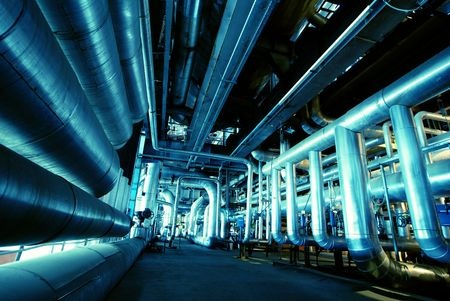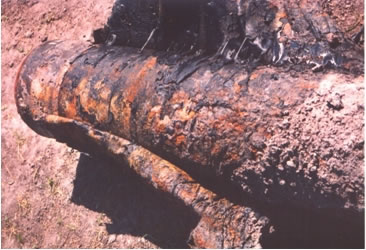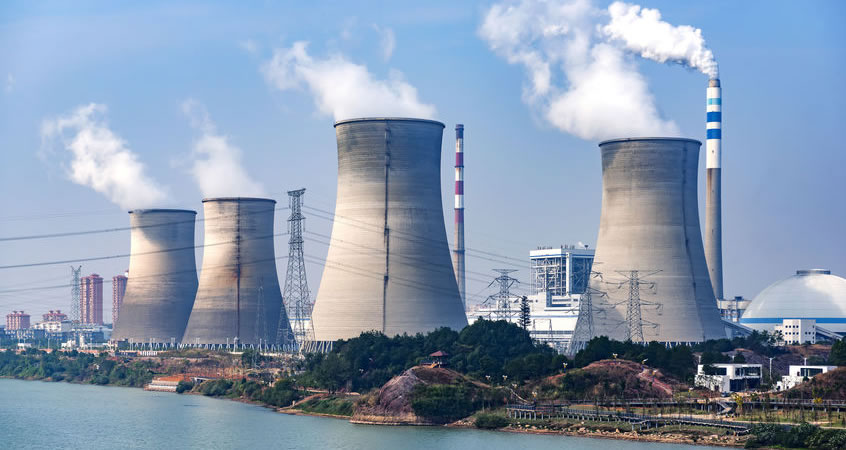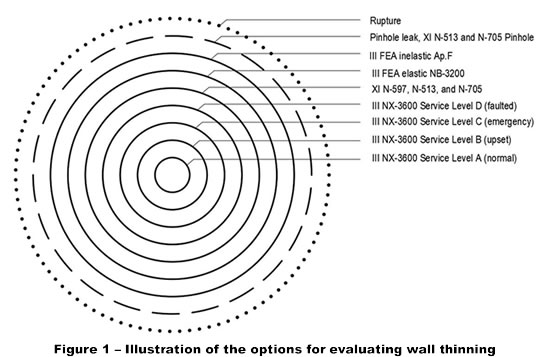Evolution of Pipe Stress Equations in the ASME Nuclear Codes (and where we are today)

The Pre-1955 Era
Until 1955, the ASME Boiler and Pressure Vessel Codes, and the ASME B31 Pressure Piping code provided rules of good design practice with quantitative criteria for pressure design. For example, quoting from ASME VIII Rules for the Construction of Unfired Pressure Vessels Section VIII A. S. M. E. Boiler Construction Code, 1927:
U-20. For Internal Pressure. The maximum allowable working pressure on the shell of a pressure vessel shall be determined by the strength of the weakest course, computed from the thickness of the plate, the efficiency of the longitudinal joint, the inside diameter of the course, and the maximum allowable unit working stress.
(S×t×E)/R = maximum allowable working pressure
Where
S = maximum allowable unit working stress in lb. per sq. in.
= 11,000 lb. per sq. in. for steel plate stamped 55,000 lb. per sq. in., 10,000 lb. per sq. in. for steel plate stamped less than 55,0-00 lb. per sq. in., and 9,000 lb. per sq. in. for material used in seamless shells.
t = minimum thickness of shell plates in weakest course, inches.
E = efficiency of riveted longitudinal joint, per cent.
R = inside radius of the weakest course of the shell, in., provided the thickness of the shell does not exceed 10 per cent of the radius. If the thickness is over 10 per cent of the radius, the outer radius shall be used.
Markl’s 1955 Breakthrough
The 1955 stress equation introduced the concept of “stress intensification factors”, as part of piping flexibility stress analysis, which at the time was implemented mostly through charts. The B31.1 1955 flexibility stress equation reflected the experimental work conducted by by Markl and George on full-size pipe fittings and joints (tees, butt welds, flange joints, etc.). Quoting from Piping-Flexibility Analysis, by A. R. C. Markl, presented in 1953 at a joint session of the Power, Applied Mechanics, Heat Transfer, Safety, Metals Engineering, and Petroleum Divisions, ASME:
(b) The expansion stresses shall be combined in accordance with the following formula
SE=√(〖Sb〗2+4〖St〗2 )
Where
Sb = I Mb /Z = resultant bending stress, psi
S, = Mt/2Z = torsional stress, psi …
i = stress-intensification factor …
(c) The maximum computed expansion stress, SE shall not exceed the allowable stress, SA, where
SA = f(1.25 Sc+0.5 Sh)”
The Advent of Elastic FEA and the (S,N) Fatigue Curves
The first Nuclear Vessels code was published in 1963. It included fatigue design using rules using stress-cycles (S,N) curves. The new ASME III (S,N) fatigue curves for nuclear vessels were based on the work of Bernie Langer and others. The 1963 Code relied on elastic finite element stress analysis of nuclear vessel components to calculate the stress intensities that would be used to enter the (S,N) curves and obtain a fatigue usage factor. The 1963 Nuclear Vessels code introduced the concept of shakedown to elastic action as a pre-condition to fatigue analysis. Shakedown was achieved by limiting the primary-plus-secondary stress intensity to 3Sm. ASME III Nuclear Vessels also permitted shakedown to be demonstrated by plastic analysis, without specifying the method of plastic analysis. For 1963, plastic analysis was a bold option since few engineers had this numerical capability. To quote from ASME III Nuclear Vessels, 1963:
N-417.5(b)(2) In lieu of satisfying the specific requirements [ primary-plus-secondary stress intensity limit of 3Sm ] at a specific location, the structural action is calculated on a plastic basis and the design shall be considered to be acceptable if shakedown occurs, as opposed to continuing deformation, and if the deformations which occur prior to shakedown exceed specified limits.
The Piping Stress Indices to Minimize Costly FEA
In 1969 the ANSI B31.7 Code for Nuclear Power Piping was published. It introduced new stress equations for Class 1 piping systems, whereas Class 2 and 3 piping systems were referred back to B31.1. The B31.7 code wanted to apply the same (S,N) curve as ASME III but without having to perform FEA on every pipe fitting and component. To quote from the Draft USA Standard B31.7, 1968 “Design Philosophy”:
Application of the A.SME Nuclear Vessels Code design philosophy to piping systems presents different problems than application of that philosophy to nuclear pressure vessels in two aspects.
- First, pressure vessels for nuclear power generation typically represent a large investment and an extensive stress analysis thereof represents a relatively small portion of the total cost of the vessel. In contrast, a typical piping system will include many different piping components, each of which individually represents a relatively small investment. The detailed stress analysis of these piping components, however, can be quite costly.
- The second aspect is that, because of the complex shapes involved in some piping components (e.g., straight tees), an accurate theoretical stress analysis is difficult and recourse to experimental analysis may be necessary.
The objective of avoiding costly FEA of piping components, for a multitude of thermal transients, was achieved by using “stress indices” applied to pressures, moments, and temperature gradients. A second important novelty in B31.7 Nuclear Power Piping, compared to ASME III Nuclear Vessels, was the introduction of a plasticity correction factor Ke. Whereas ASME III permitted fatigue analysis using plastic strains (as quoted above), B31.7 provided the formulas for a plastic-equivalency by applying a plastic correction factor Ke to the peak stress intensity, before entering the (S,N) curve. The origin of the K factor can be found in “Plastic Fatigue Analysis of Pressure Components,” by S.W. Tagart, presented at the ASME Joint Conference of the Petroleum and the Pressure Vessels and Piping Division, Dallas TX, September 1968. Paper No. 68-PVP-3.
The Merger of 1971
It is in 1971 that nuclear piping was transferred from B31.7 to ASME III, which also added nuclear pumps and valves, to become ASME III Nuclear Components. Technically, not much changed as B31.7 Class 1 became ASME III NB-3600 Class 1. But for Class 2 and 3, the primary stress equation was introduced for the analysis of seismic and other postulated loads such as fluid transients. The new ASME III Class 2 and 3 primary stress equation had the following form, where “k” was a function of the Service Level of the load (normal, upset, emergency, faulted; later changed to Service Levels A, B, C, and D). This is the most common piping design equations in the US nuclear power industry, as more and more nuclear plants were being designed and constructed in that period.
(PD)/(4t)+0.75i M/Z ≤ k Sh
The 1981 Class 2 and 3 Stress Indices
In 1981, the Class 2 and 3 stress intensification factor 0.75i was replaced by the stress index B2 to better align itself with Class 1 and the prevention of failure by structural instability or buckling under large seismic or fluid transient loads. The replacement of 0.75i by B2 is best described in NUREG/CR-0261 Evaluation Of The Plastic Characteristics of Piping Products in Relation to ASME Code Criteria by E. C. Rodabaugh and S. E. Moore, 1978; and NUREG/CR-3243 Comparisons of ASME Code Fatigue Evaluation Methods for Nuclear Class 1 Piping with Class 2 or 3 Piping, by E. C. Rodabaugh, 1983.
(PD)/(4t)+0.75i M/Z ≤ k Sh→B1 (PD)/(2t)+B2 M/Z ≤k Sh
The New Seismic Stress Equations of 1994
In the period 1985-1988 EPRI and NRC sponsored a comprehensive seismic shake table test program of piping systems and 41 pipe components. This program was documented in a five-volume report entitled Piping and Fitting Dynamic Reliability Program, EPRI TR-102792, published in 1994. The seismic shake table tests indicated that failure of piping systems was primarily caused by fatigue, and by fatigue ratcheting where high pressure-induced hoop stresses were superimposed to the seismic stresses. These tests lead to the introduction of an alternative set of stress equations and limits for what was then labeled reversing dynamic loads (i.e. seismic, and building-filtered BWR transients, but not waterhammers). The alternative for reversing dynamic loads consists mainly of replacing B2 by B2’ which is lower than B2 for some fittings, a relaxation of limits on anchor motion stresses, additional limits on deadweight stresses, and new limits on anchor motion forces. These changes evolved as a result of the US NRC review and comments, and were finalized and approved, 12 years later, in 10CFR50.55(a) for the 2006 addenda of ASME III Div.1.
Where we are Today – 2017
Much of the international research in nuclear piping systems centers on the effects of corrosion on the fatigue life of nuclear piping components, and the influence of environmental effects on life extension and in-service inspections of nuclear plant piping systems. These efforts are best captured in the US NRC Regulatory Guide 1.207, Guidelines for Evaluating Fatigue Analyses Incorporating the Life Reduction of Metal Components due to the Effects of the Light-Water Reactor Environment for New Reactors.
In the area of seismic design of a piping system, there is an international collaborative effort, sponsored by the OECD (Organization for Economic Co-Operation and Development), Nuclear Energy Agency (NEA), and the Committee on the Safety of Nuclear Installations (CSNI) to re-visit, and improve where necessary, the seismic design criteria of nuclear power plants. In light of past and more recent shake table tests in various countries, the seismic performance of piping systems in nuclear power plants during recent large earthquakes should be reviewed.
Have a question or would like more information? You may post to this blog or click the link below for more help.






